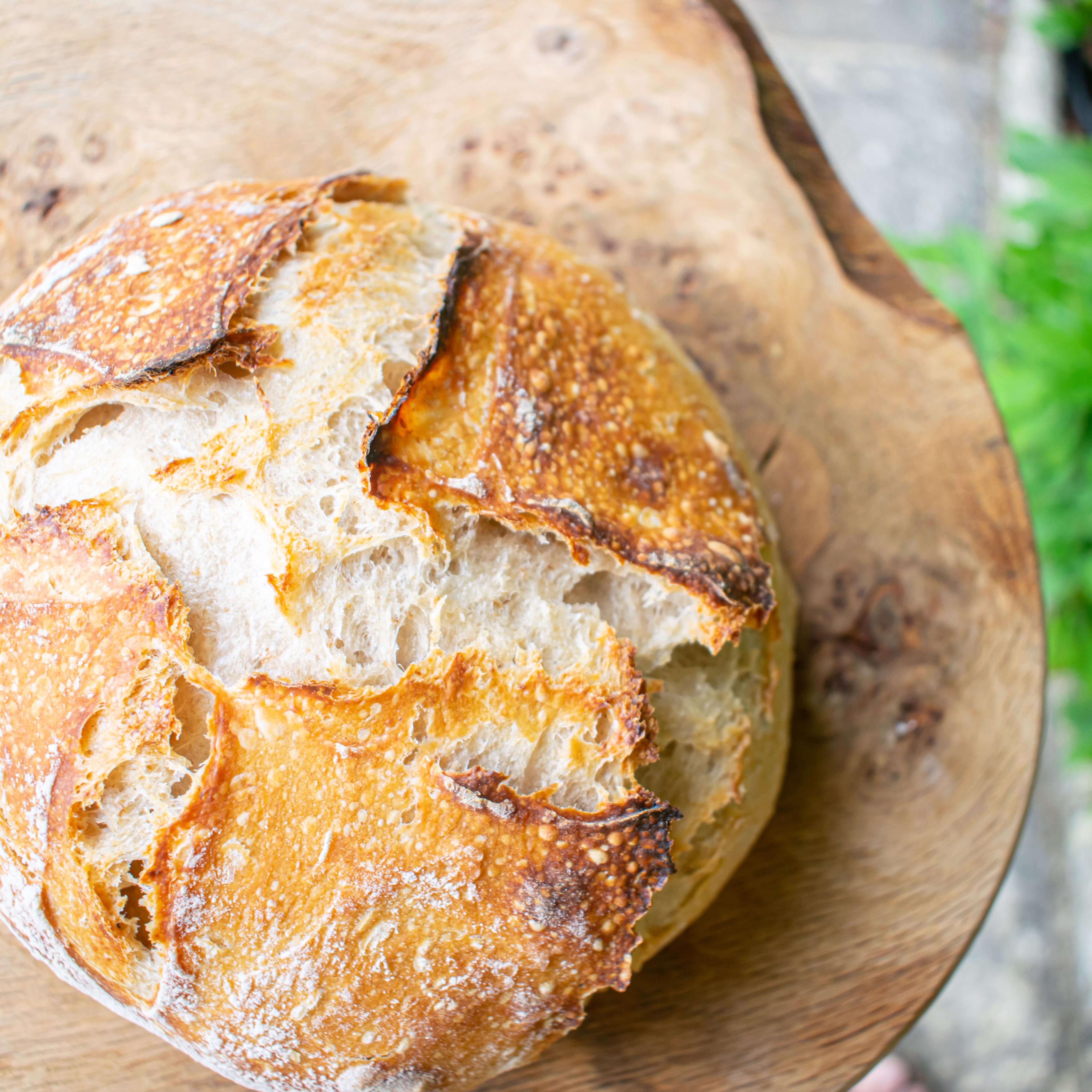If you’ve baked MOB’s sourdough tin loaf, you’re now ready to try a round loaf. This is the most popular kind of sourdough bread, similar to the ones that you often see in bakeries. There are hundreds upon hundreds of different methods for cooking these loaves. No two people will follow exactly the same recipe. Everything from the amount of water in your dough, to the way you knead it, to the amount of time you leave the dough to rise. No two loaves you bake yourself will be the same, either. There are so many different things that affect the way it turns out — room temperature, the type of water that comes out of your tap, and the brand of flour you use all make a difference.
This recipe is designed for beginners. It doesn’t require specialist equipment like dough scrapers or proving baskets. And it is “low hydration,” which just means that it contains less water and more flour than in other recipes. A low hydration dough yields a tighter crumb, which is another way of saying the holes in your bread will be small-ish. It’s great for sandwiches or for serving with soup. Eventually, when you get the hang of working with this dough, you might want to consider making a higher hydration loaf, which makes your bread airier with bigger holes. But a lowish hydration is good when you’re starting out because the dough is stiffer and easier to work with. It makes excellent everyday bread, with a beautiful tangy flavour, a crunchy crust, and a soft crumb.
The full recipe is linked at the bottom of the page. But we’ve talked through the process in a little detail below so you understand the purpose of each step, which should help when you’re making your loaf.
